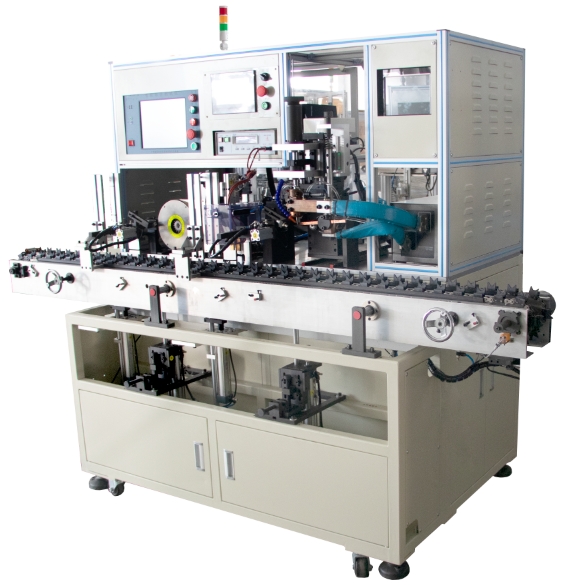Simple Guide to Troubleshooting and Fault Analysis for Fully Automatic Motor Rotor Spot Welding Testing Machines
If any abnormalities occur in the entire machine, first record the alarm code and working conditions, then troubleshoot in the order of “mechanical → electrical → software,” starting with the easiest and moving on to the most difficult.
Mechanical Components
1. If the rotor is not securely clamped or there is positioning deviation, this is typically due to wear and deformation of the clamping fixture or drift in the positioning sensor; Immediately inspect the fixture and replace or grind it, then recalibrate the sensor and tighten the positioning bolts.
2. A sudden drop in electrode lifespan or fluctuating welding pressure is typically caused by poor electrode material quality, unbalanced process parameters, or failure of the pressure mechanism; replace with chromium-zirconium copper electrodes, re-optimize the current, time, and pressure curves using DOE, and inspect the cylinders, springs, or proportional valves.
3. Sudden increase in noise or vibration during operation is often caused by loose components, insufficient lubrication, or damaged transmission parts; first tighten the bolts one by one, add lubricating oil, then check the belt tension, chain pitch, and gear clearance, and replace the bearings or couplings if necessary.

Electrical Components
1. If the equipment fails to start or experiences partial functionality failure, first inspect the three-phase power supply, fuses, and circuit breakers to confirm that 380 V, 220 V, and 24 V are functioning normally at each level. Then shake the cables, reconnect the terminals, and finally use an oscilloscope or multimeter to test the control board and servo drive; replace if damaged.
2. If the spot welding current fluctuates, first measure the output voltage and ripple of the welding power supply. If overheating occurs, clean the dust and replace the fan. Then calibrate the zero point of the Hall current sensor; if drift is detected, update immediately. Finally, verify the control program and reprogram if necessary.
3. If leakage occurs, first use a megohmmeter to measure the insulation between the wire and the housing in sections. If it is below 1 MΩ, replace the damaged cable. Then check whether the PE ground wire is secure and install a leakage protector if necessary.
Software section
1. If the operation interface does not respond or the screen is distorted, first restart the software. If this does not work, update to the latest version. If the problem persists, clean up system junk files, run an antivirus scan, and reinstall the operating system if necessary.
2. If test data fluctuates or is lost, first ping the sensor IP to confirm communication, then check the M12 connector and shielding layer; subsequently, reset the sampling frequency, range, and filter parameters in the software.
3. If the device suddenly shuts down and displays an error, first troubleshoot the overload, over-temperature, or over-limit conditions as indicated in the Alarm.log, then reset after correction; If you suspect a software logic error, immediately contact the software developer for remote diagnosis and patch updates.
If the issue persists after the above steps, please contact the technical specialist at Xinhui Mechanical & Electrical Equipment Co., Ltd. via the page chat tool, providing the device serial number and complete logs. An engineer will respond within 30 minutes.









